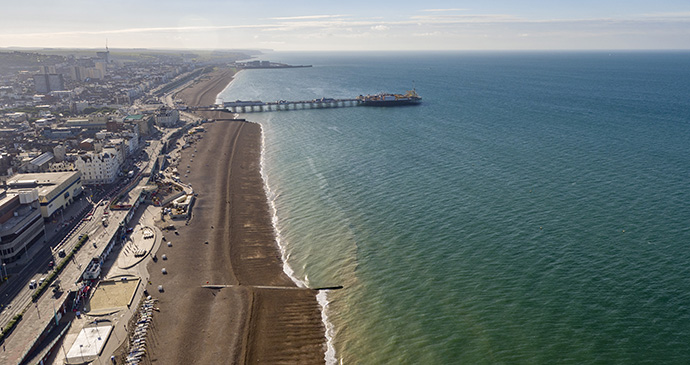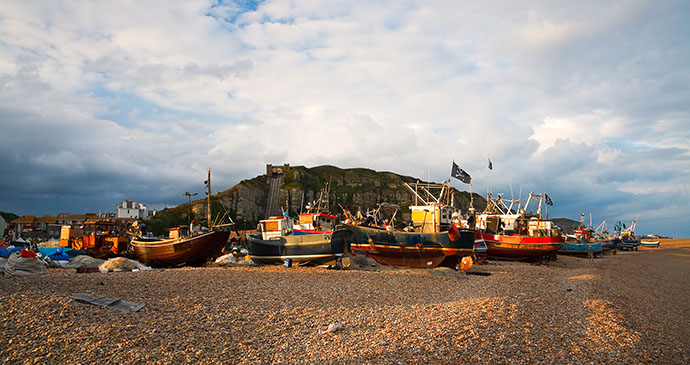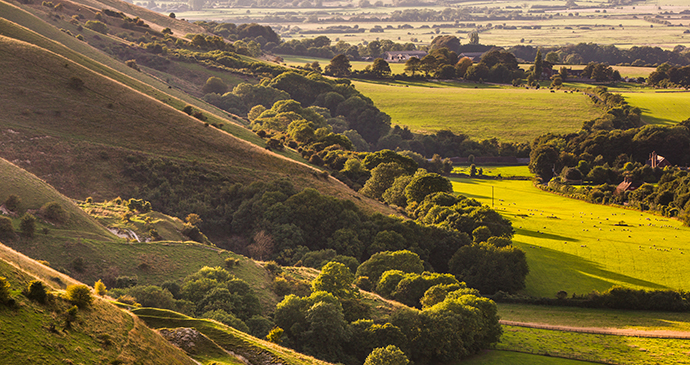Suggested places to base yourself
Getting there and around
Suggested places to base yourself
The places listed below make ideal bases for exploring Sussex.
Brighton
Pleasure-seeking Regency-style at this inimitable seaside resort.

Lewes
A bewitchingly idiosyncratic town folded into the South Downs.
Chichester
A supremely manageable cathedral city, with bike routes and boat trips around Chichester Harbour.
Hastings
Heaps of salty character and a stupendous hilly site: net houses, seagulls, great shand chips and rugged cliff walks.

Rye and Winchelsea
Two miraculously unchanged settlements with a remarkable array of natural glories and manmade sites within easy reach.
Midhurst and the Rother Valley
At the hub of aristocratic West Sussex, with its great estates, and perfectly placed between the Downs andHigh Weald.
The Lower Arun Valley
Vintage pottering territory between Arundel and Amberley.
Cuckmere Valley
Walking country for connoisseurs, with rewarding villages and the switchback clif fs of the Seven Sisters.
The High Western Weald
Tile-hung cottages, glorious gardens, ancient woodlands and wildflower meadows in a landscape fundamentally unchanged in centuries.
Getting there and around
Sussex is quite a mixed bag when it comes to finding ways of reaching it. For driving, the A27 provides the easiest west–east route, but the A272 is much more fun and has even inspired Dutchman Pieter Boogart to write a book (A272, An Ode to a Road) in homage to its glories. If venturing from London or further north, the A23/M23 make a practical if unlovely entrance, but there are plenty of more appetising, slower alternatives through the high ground of the Weald and over Ashdown Forest.

Public transport
Exploring areas without a car can work very well in some parts, less so in others. If you wish to explore local bus routes, a handy source of reference comes in the form of the Traveline website (though it can be tricky to navigate if you don’t know where to start from). The Discovery bus ticket is accepted by most bus operators in West and East Sussex, as well as Surrey and east Hampshire, giving scope to visit a huge range of places though requiring a lot of careful reading of bus timetables.
For train travel, the coast is mostly well served, and a handful of lines lead northwards to give a decent set of options. DaySave tickets give unlimited travel on Southern rail services. Beware that at weekends services can often be subject to engineering works, and trains replaced by buses, which can be much slower.
Walking and cycling
Sussex and the South Downs are extraordinarily rich in good walks and this area really stands out for walks worth travelling across the country to do. Somehow the excellent rights-of-way network and diversity of the scenery, and a good smattering of viewpoints and manmade and natural places to discover, all combine to make this high-quality walking terrain. The clearly marked South Downs Way is a source of many more outstanding strolls and longer hikes from the Hampshire border to Beachy Head, and you can cycle or ride a horse along the entire route except the section down the Cuckmere Valley and along the Seven Sisters.